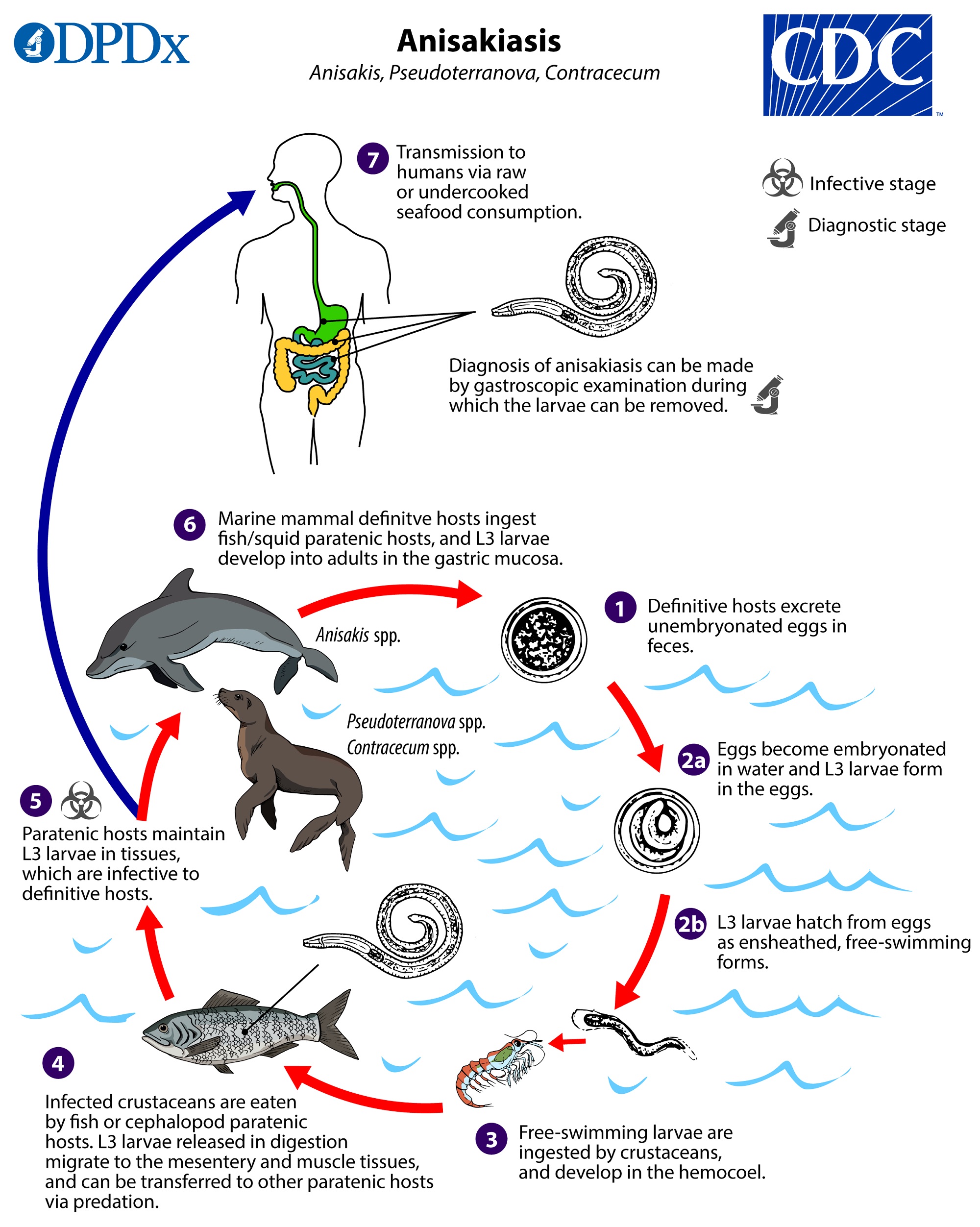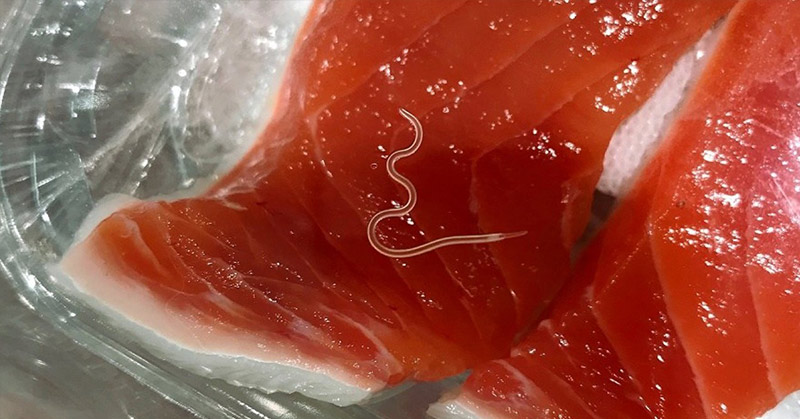Going out for sushi is a common choice when going out for dinner with friends. A recent increase of parasites in sushi, at least in this particular type, may make you want to be more mindful the next time you choose this option for a meal out.
Anisakis Parasites in Sushi
Anisakis are parasitic nematodes (worms) and are also known as whale worms. They are found in marine life, including fish and mammals. A report published in Global Change Biology shows that the rate of fish infected with the parasite has increased by 283 times since the 1970s. (1, 2)
These worms can grow up to two centimeters in length and can cause vomiting and diarrhea when consumed by humans. An infection is known as Anisakiasis can also occur, and it’s symptoms include (4):
- A tingling sensation during or after consuming a worm (this is the worm moving in the mouth or throat)
- Abdominal pain
- Nausea
- Bloating
- Blood and/or mucus in stools
- Mild fever
- Allergic reactions (usually a rash or itching, sometimes anaphylaxis)
While humans can become infected with these parasites, they are not contagious. This means human-to-human transmission is not possible (4).
The Data Doesn’t Lie
Analysis done on studies that date back to 1967 found over 55,000 species of the worm in 215 different species of fish. In the late ‘70s, researchers found less than one worm per 100 fish. Now, they are finding more than one worm per individual fish. This means that while some fish aren’t infected at all, other fish are simply crawling with them. (1, 2)
How the Parasite Infect Fish and Humans
The primary host for adult whale worms are, you guessed it, whales! All cetaceans, including dolphins and seals, make perfect homes for these tiny creatures. The life cycle and mode of infection of these worms are as follows (3):
- Cetaceans (whales, dolphins, seals, etc) feces contain anisakids eggs. The mammals defecate and release these eggs into their environment.
- The eggs hatch in the water and become larvae.
- The larvae are eaten by crustaceans and mollusks. Krill, a crustacean, is an important intermediate host as they are a primary food source for fish and squid.
- The larvae then encyst on the intestines and other visceral organs of the fish and squid. The larvae remain unchanged until their fish hosts are eaten marine mammals.
- Once inside a whale, dolphin, or seal, the larvae grow, mate, and then release eggs through their host’s feces to restart the cycle.
Humans become unintentional hosts when we consume raw or undercooked fish and squid that are contaminated by the parasite. (3) Check out the image below if you’d like a better visual.

A Potential Problem for Marine life
Such a massive proliferation of these parasites may pose a risk for its various hosts. Worms are frequently found in whale autopsies, though experts are unsure how sick the mammals are when carrying the worms. For intermediate hosts, the parasite causes more obvious problems. Infected Atlantic Salmon, for example, develop red vent syndrome: a swelling and bleeding of the openings to the digestive and reproductive tracts. (1, 2)
You’re probably wondering why the rate of infection has increased so dramatically in the last 40 years. There are a couple of theories as to why the parasite population is expanding:
- Some whale populations, which were suffering for many years, are on the rebound. More whales mean more hosts for the parasites and a higher rate of them being spread throughout the ocean. (1)
Parasite ecologist at the University of Washington in Seattle says that this could be a good sign.
“These worms might be a signal that things are getting better for ocean ecosystems,” (1) - The life cycle may be getting faster because of climate change and the warming of our ocean’s waters. This theory is only hypothetical, however, and has yet to be studied thoroughly. (1)
“My gut feeling is that it’s about recovery to a prehuman baseline,” Wood says. “In a pristine ocean, there were tons of marine mammals pooping out lots of Anisakis that infected fish in great abundance.” (1)
Should You Stop Eating Sushi
Freezing or cooking fish does effectively kill the parasite, so if you are cooking your fish you won’t have any problems. Sushi and sashimi, however, do pose a greater risk. That being said, even Woods, who spends much of her day studying these parasites, still eats sushi. (1)
According to her, sushi chefs are even better at spotting these worms in the fish than scientists are, and pick out the worms when they are found. It is still wise to be mindful when eating and inspect your food before eating it, however, this news should not stop anyone who still wants to go out and enjoy a sushi dinner with friends. (1)

